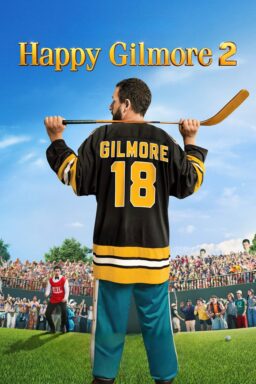Video game coverage at RogerEbert.com began with an examination of how the Capcom games and the Screen Gems films in the “Resident Evil” series have influenced one another, and other franchises. Now it’s time to return to this universe of unimaginable creatures. The “Resident Evil” franchise turns 25 this year, and it’s been an incredible quarter-century that has marked it as one of the most successful series of all time. What’s interesting is how much the game series has changed, starting life as a definitive example of survival horror (limited supplies, heavy on atmosphere) and then shifting into something more action-heavy in outings like “Resident Evil 5” and “Resident Evil 6.” 2017’s “Resident Evil 7: Biohazard” both returned the series to its horror-based roots and rewrote the structure of the franchise, making it into a first-person, terrifying experience that recalled “The Texas Chain Saw Massacre” more than “Night of the Living Dead.” Four years later, Capcom has unleashed “Resident Evil Village” (in the right font the first four letters of ‘Village’ can be read as ‘VIII,’ making it clearer that this is a series entry and not a spin-off), a game that again shifts the tone in both positive and negative ways. It’s a game that frustrated me with some of its design, but that’s ultimately an immersive experience, which is what hardcore fans like yours truly want from a “Resident Evil”—to get lost, to get scared, and to get out, barely.
“Village” picks up three years after “Biohazard” and continues the story of Ethan Winters, who has escaped from the nightmare of the last game with his now-wife Mia and their six-month-old Rose. The prologue almost feels like an echo of the opening scene of “The Last of Us” with its simple domesticity that one knows is about to be shattered. Mia reads a creepy bedtime story to Rose, and the adults prepare to eat dinner when their new lives are shattered by gunfire. Mia is killed and Rose and Ethan are taken by none other than Chris Redfield (a legendary name in the “RE” universe). Moments later, Ethan wakes up in the aftermath of a car crash, and Rose is missing. He wanders into a nearby village—echoes of “Silent Hill” in the set-up may or may not be intentional—and the action of the game unfolds.

It’s not long before Ethan is set upon by creatures new to the “RE” world that resemble sort of zombie-werewolf hybrids, but the gameplay here is familiar—searching houses for minimal supplies, staying out of sight, getting your ass kicked (in particular, poor Ethan’s hands take a beating throughout “Village”). Before long, Ethan learns that this village is controlled by four monstrous creations—a vampire queen named Lady Dimitrescu, a terrifying dollhouse ghost called Donna Beneviento, a troll-looking monstrosity named Salvatore Moreau, and a magical being with style named Karl Heisenberg. And they all serve at the will of the legendary Mother Miranda, whom the villagers worship for their own safety.
Of course, the gameplay is going to bring Ethan to all of these creatures, each of whom has their own distinct setting in which you will have to alternate between solving puzzles, tense combat, and running for your life. There’s a great deal of violence inflicted on Ethan, and it’s designed to make him a flawed protagonist. He’s constantly getting thrown around, and you regularly would do better to run from an encounter than try to shoot your way out. In a sense, that’s a throwback to the original games, but Ethan feels even weaker than the original heroes, someone who is constantly being chased, trapped, or abused. Games are so often about superpowered characters that it takes a little while to get used to Ethan’s general weakness, although the game does follow a traditional action path in that stronger weapons (through discovery or upgrade at shops) makes Ethan into more of a creature-killing machine, especially late in the game.
Overall, the brutal violence of “Biohazard” has been replaced by something closer to an old-fashioned monster movie in the story of “Village.” The design of the game’s main setting feels like an homage to the world of the massively influential (and still my favorite in the series) “Resident Evil 4” and classic horror films set in spooky castles and haunted mansions. The thrust of our coverage of video games here at RogerEbert.com has about the intersection of films and video games, and “Village” is thick with settings and set pieces that seem pulled from all over the horror movie map, but particularly in films of other eras and other countries. What people like Dario Argento and Mario Bava did in the Giallo genre feels like it inspires the daunting spires of Lady Dimitrescu’s castle. Her three daughters—Bela, Cassandra, and Daniela—could come straight from something like “Suspiria” or “Mother of Tears.” The general village setting has a Hammer Horror vibe with its pitchforked survivors and creatures of the night.

The overall aesthetic of “Village” and the way its developers intertwine both the history of the game and cinematic influences is arguably its greatest strength. Even as the gameplay frustrated me with a boxed-in perspective and sometimes repetitive pace that derails the tension, the world of the game stayed interesting. Call me a purist, but I vastly prefer the third-person perspective on “RE” games. Locking people into a tight POV in “Biohazard” upped the tension, but I found the lack of peripheral vision more frustrating here. “Village” is a game about details—often having to find something unique in the environment (usually a hiding place)—and it often feels like the locked perspective is making that harder than it needs to be. I got a little tired of going into dark rooms and searching for the little arrow that meant I could open a drawer or smash a vase, for example.
Morimasa Sato, game director for “Resident Evil Village,” told PlayStation Magazine last year that he wanted people to think of the title “as a horror movie that you can play.” Its best elements completely accomplish that goal, dropping gamers into a universe equally inspired by the cinematic history of monster movies as it is the “Resident Evil” legacy. In fact, some hardcore gamers may argue it skews too much to the former, taking away some of the elements that work from the best games in this series in favor of Sato’s horror movie vision. I found myself admiring the structure and ambition of “Village” while not always enjoying playing the game like I have “Resident Evil” titles in the past. It’s a brutal, intense experience. It’s up to you to decide if it’s a fun one too.
Capcom provided a PS5 copy for review.












